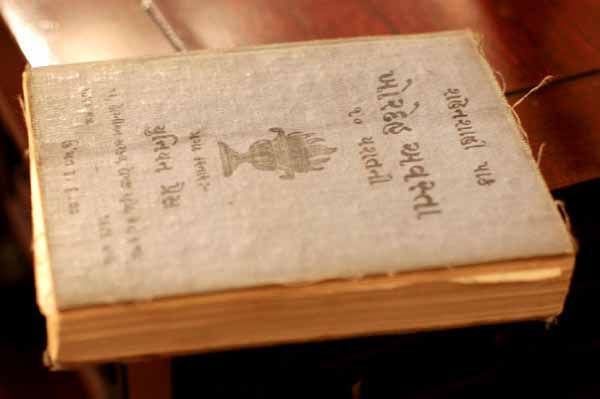In the rich tapestry of religious history, the Bahá’í Faith emerges not merely as a new religious movement but as a synthesis of profound spiritual truths found across various traditions. One particularly fascinating aspect is the interplay between Bahá’í teachings and Zoroastrian prophecies, especially regarding two pivotal figures in Bahá’í belief: the Báb and Bahá’u’lláh. This exploration necessitates an inquisitive spirit: what if the ancient predictions of a long-past faith hold the keys to understanding the trajectory of a modern religious paradigm?
To navigate this intricate subject, it is essential to first provide an overview of the core tenets of Zoroastrianism and the Bahá’í Faith. Zoroastrianism, one of the world’s oldest monotheistic religions, heralds the teachings of the prophet Zoroaster, or Zarathustra. Central to Zoroastrian doctrine are concepts of dualism—good versus evil—and the eventual triumph of truth and light over falsehood and darkness. This contrasts with the universal and progressive revelations proclaimed in the Bahá’í Faith, which teaches that God has sent a succession of divine educators throughout history, each suited to the needs of their particular epoch.
At the heart of any study of prophecy is the recognition that interpretations can vary widely. However, a fascinating thread weaves through Zoroastrian scriptures that alludes to the coming of a divine figure akin to that of the Báb and Bahá’u’lláh. This prophetic vision is encapsulated in the Zoroastrian concept of the “Saoshyant,” a savior expected to emerge at the end of time to renew the world. Bahá’ís interpret this figure as having substantial parallels with the roles of the Báb and Bahá’u’lláh, suggesting that both fulfill the expectations articulated in Zoroastrian texts.
For instance, the Zoroastrian texts describe a figure who will herald the arrival of a new age, marked by justice and unity. This aligns exquisitely with the mission of the Báb, who proclaimed himself as a precursor to Bahá’u’lláh, the supreme manifestation of God in this age. The Báb’s teachings initiated a transformative wave among the disenfranchised and the believers, kindling hope for a future imbued with divine justice and societal harmony.
Furthermore, the Bahá’í concept of progressive revelation illuminates how the teachings of the Báb and Bahá’u’lláh resonate with Zoroastrian expectations. The notion that God communicates with humanity through successive prophets provides a contextual framework. Each manifestation is a continuation, building upon prior revelations to address contemporary issues faced by humanity. Thus, the Zoroastrian prophecies are viewed through a lens of continuity, evolving to meet the spiritual necessities of a global audience.
The resilience of these teachings speaks volumes to the interconnectedness of religious truths across temporal and cultural divides. A case in point is the shared emphasis on moral and ethical conduct. Both Zoroastrian and Bahá’í teachings stress personal accountability and commitment to social justice. This commonality raises an intriguing question: How can these ancient ethical frameworks inform modern societal challenges, such as environmental crises or global inequity?
Moreover, as we delve deeper into the Zoroastrian texts, we encounter further resonances with Bahá’í teachings. The concept of individual accountability in the face of both temporal and eternal consequences is pervasive. Zoroastrian teachings on the “Chinvat Bridge,” which souls must traverse after death, parallels the Bahá’í emphasis on a moral existence that contributes to the betterment of society and spiritual progression. Such connections illuminate how spiritual ethics transcend time and culture, emphasizing a universal moral narrative.
Additionally, Zoroastrian prophecies implicitly suggest a future filled with enlightenment and the unification of humankind—an ideal that lies at the core of Bahá’í doctrine. Such parallels compel the question of whether Zoroastrianism could be regarded as a precursor to the Bahá’í revelations, weaving a narrative that portrays a divine plan for humanity’s ultimate cohesion. What might this portentous linkage unlock in terms of interfaith dialogue and broader acceptance across differing religious communities?
The implications of these prophetic interpretations extend beyond theological discourse; they invite a contemplative examination of cultural heritage and identity among Zoroastrian Bahá’ís. In regions where Zoroastrianism historically thrived, adherents of the Bahá’í Faith often navigate an intricate landscape of belief and tradition. The rich cultural tapestry that intertwines these two religions not only enriches individual identity but also promotes a shared vision for the future marked by understanding, tolerance, and collaboration.
In conclusion, the exploration of Zoroastrian prophecies surrounding the Báb and Bahá’u’lláh reveals a profound interconnection that transcends mere textual interpretations. As individuals delve into these teachings, they are invited to consider the broader implications of spiritual unity and the moral imperatives that both traditions espouse. Ultimately, this quest for understanding leads to a harmonious vision of a world characterized by mutual respect, collaboration, and the shared pursuit of truth—a tenet that stands timeless across the ages. The inquiries triggered by such intersections may continue to challenge our perspectives, prompting us to explore further the depths of our spiritual heritage and collective future.
